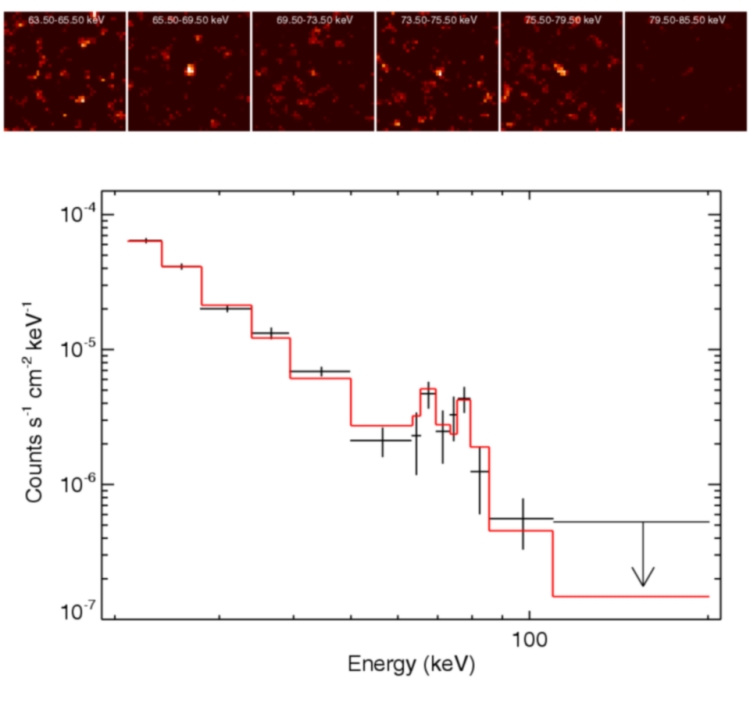
 Credit:M. Renaud (CEA-Saclay, SAp)
Credit:M. Renaud (CEA-Saclay, SAp)
Gamma Cas A
A supernova's brightness is either entirely or in large part produced by the decay or radioactive elements which are produced in the explosion. The radioactive decay happens quickly, so most of the radioactive elements are soon reduced to imperceptibility. However, some long-lived species produced in the explosion can in principle be measured by the gamma-ray radiation they emit, provided astronomers a way to probe the very process of explosive nucleosynthesis. For the first time, the INTEGRAL gamma-ray observatory has detected gamma-ray emission from radioactive 44Ti, which has a lifetime of 86 years and which emits three
gamma-ray lines at 67.9, 78.4 (from 44Sc) and 1157 keV
(from 44Ca) once it decays. In an observation of Cas A, the youngest supernova remnant in the Milky Way, the IBIS/ISGRI instrument on INTEGRAL detected lines from 44Sc. The plot above shows the gamma-ray spectrum of Cas A, clearly showing 2 bumps from the line emission produced by the decay of 44Sc. The images at the very top show energy-selected images of Cas A, clearly showing excesses in the energy ranges corresponding to the 67.9 and 78.4 keV lines.
<
HEA Dictionary ● Archive
● Search HEAPOW
● Other Languages
● HEAPOW on Facebook
● Download all Images
● Education ● HEAD
>
Each week the HEASARC
brings you new, exciting and beautiful images from X-ray and Gamma ray
astronomy. Check back each week and be sure to check out the HEAPOW archive!
Page Author: Dr. Michael F. Corcoran
Last modified Monday, 26-Feb-2024 17:44:53 EST


